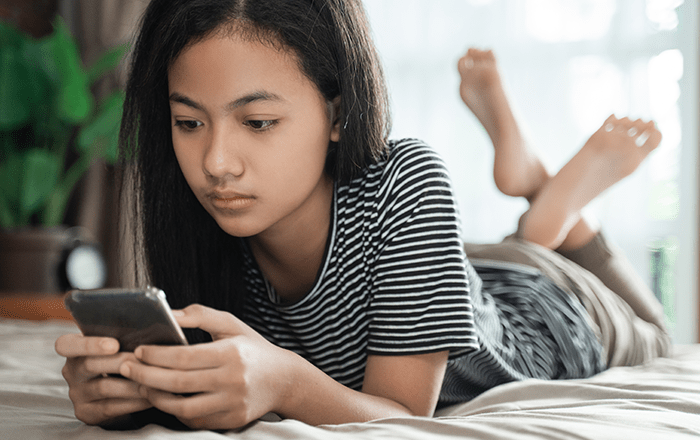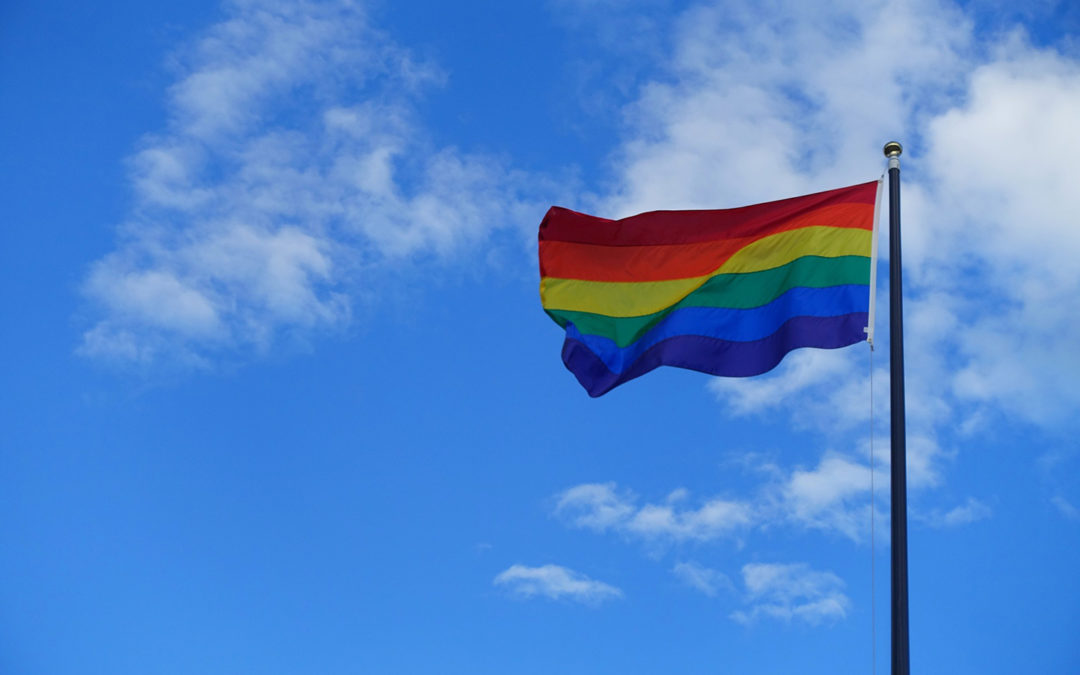by North Shore Child & Family Guidance Center | Jul 13, 2020 | COVID-19
Cohen Children’s Northwell Health Coloring Book makes it easy to talk with your kids about COVID-19. Click Here to Download this coloring book made just for them in an easy to read format.
47354_coloringbook_w305478_corona_kid_master_21mar2020_all-coloring-pages

by North Shore Child & Family Guidance Center | Jul 8, 2020 | Blog
While staying home during the COVID-19 pandemic, many of us have spent an increasing amount of time on our cell phones. Today’s cell phones can practically do it all, from the endless wealth of information that is the internet to mindless yet hopelessly addicted games. Social media apps have become incredibly popular recently, and they can indeed give users a needed respite from the loneliness that social distancing has contributed to. Americans of all ages also rely on popular sites such as Facebook and Twitter for much of their news. But is this increased screen time doing more harm than good in the long run?
Social media has provided a near-constant flow of information about the virus since the beginning of the pandemic. Forbes reports that YouTube has become the primary platform for approximately one in six Americans for the latest news about the virus.
YouTube is, of course, far from the only platform that has been a source of news throughout the pandemic. Twitter, Facebook, and Instagram have all transformed the traditional news experience. Instead of gathering around the television in the evening to learn the news, Americans are given access 24/7 to an endless stream of information. This access may inhibit the ability to separate ourselves from current events. While it is always important to stay informed, setting limits and boundaries to access is a healthy approach, especially for children.
Amid uncertain times, such an overwhelming stream of information, especially when so much of that information is rather upsetting, can take a toll on your mental health.
While social media has plenty of positive aspects, it is not without its flaws. Social media apps like Instagram and Snapchat are incredibly popular among kids and teenagers in particular. With the abilities to share photos and connect with friends, social media became a crucial tool for young students who were sent home from school to keep in touch with their classmates while at home. Being able to connect with friends online can help to mitigate feelings of anxiety and loneliness that have been so common during the pandemic.
However, as the country begins to reopen, we must consider the long-term effects of this addiction for kids and teens especially. While adults may be able to switch back into their old habits upon returning to work, it is likely that younger people will continue these habits. After all, teenagers and young adults are the largest population of social media users already, so this new rise is merely a heightened version of what they were already doing.
Younger generations are becoming more and more dependent on their cell phones and the internet for nearly everything. The coronavirus pandemic, in particular, is showing just how much news information social media apps can share with its users, whether it is accurate or not.
However, as parents, we must encourage ourselves to dive deeper and educate ourselves and our children beyond catchy headlines and aesthetically-pleasing photos. Social media cannot tell the full story, both in terms of news and our social lives. It is advisable to remind your children that social media is a highlight reel — not a full life.
Rather than catching up on social media, try to connect with others by calling or video chatting. Though still through a cell phone, these more personal means of communication can help to maintain the important connections of relationships while apart.
If you find yourself spending too much time on your phone, there are many ways to help curb your habits. Apple’s devices are equipped with “screen time,” which allows users to set daily time limits for certain types of applications. Other apps like “Space,” which includes the ability to set goals for more mindful phone use, and “App Detox,” which sets rules for specific apps, can also help. Of course, it may seem counterintuitive to use smartphone apps to limit your screen time. Simple tips such as leaving your phone in another room to avoid checking it unnecessarily can be just as effective!
Parents must understand that if they want their children to reduce their screen time, they must walk the walk themselves. When spending time together put your own phone away, and encourage your children to do the same. For younger children especially, daily “screen-free” time should become an essential to avoid an over-reliance on devices. Take some time together to spend outside on a nice day, reading or gardening together. If you need to beat boredom, redirect your child’s normal screen habits to unplugged equivalents. Find board games and puzzles to entertain a video game-addicted child, or encourage a little Netflix addict to read a book (perhaps the book that their favorite movie or show was based on!).
Again, parents must instill these habits in their own lives in order to set a good example. Children will learn when it is okay to be on their phones based upon your actions. Hopefully, we can use this as a chance to look mindfully upon our relationship with technology and make some changes for the better. After all, many of the best moments in life are those when you forget to look at your phone!
Sources:

by North Shore Child & Family Guidance Center | Jul 2, 2020 | COVID-19, In The Media
As COVID-19 cases begin to surge across the country, again, questions surrounding when life will truly return to normal rise along with it. And yet, our current plight is anything but a mystery. Did we really think we had this thing beat in less than four months? Was reopening such a good idea?
As New York State’s numbers, once the epicenter of the pandemic, continue to decline the only thing that everyone (well, almost everyone) can agree on is that, no matter where you are, this is still far from over. In addition to the virus itself, according to the American Psychological Association COVID-19 aggravates existing mental health problems while potentially onsetting new symptoms– symptoms that can outlast the virus.
There is a universal trauma happening.
It’s been well documented that trauma occurs from war, oppression, natural disasters, and individual experiences. The current pandemic is no different, except it is a “mass trauma” filled with “anticipatory anxiety” on a worldwide scale. Without a cure or vaccine, society collectively wonders– will it come back? Is it safe to reopen? As more people file for unemployment and businesses continue to shut their doors, physical recovery is compounded with an eye on financial recovery. These anxieties are known as “peritraumatic”, occurring around the time of trauma in the form of intrusive thoughts.
Jessica Corea, a Licensed Mental Health Counselor, explained, “The world is experiencing a unifying trauma of loss and uncertainty. Patients are facing anxiety, depression, and financial stress all at the same time while trying to adapt to a new normal.” Even when the pandemic itself passes, it is sure to leave mass emotional destruction in its wake in the form of Post Traumatic Stress Disorder (PTSD), a classified mental disorder in the Diagnostic and Statistical Manual of Mental Disorders. Like any radical shift, the traumatic effects can go on for years.
Posttraumatic Stress Disorder can happen to anyone.
“Previous epidemic studies report high prevalence rates among people exposed to the trauma resulted from an infectious disease epidemic,” the National Center for Biotechnology Informationreported on June 5, 2020. Just like SARS, MERS, and HIV/AIDS, COVID-19 survivors are most at risk for PTSD, followed by family members who directly witnessed a loved one suffer or die, medical workers, and the general public. Further, the psychological trauma was categorized into three groups. First, directly experiencing the symptoms. Next, witnessing those who struggled. And third, experiencing a “realistic or unrealistic fear of infection, social isolation, exclusion, and stigmatization.” Essentially, like the virus itself, everyone is at risk.
“There is now a new normal that may be with us for a long time. Just as 911 impacted our lives in many ways so has this pandemic. I would certainly call this a traumatic event that has impacted everyone,” noted Elissa Smilowitz, Director of Triage and Emergency at North Shore Child & Family Guidance Center on Long Island.
Health experts across the globe are now preparing to treat patients with COVID-19 PTSD. Except the underlying issue is that PTSD symptoms don’t begin to develop until weeks or months after a traumatic event, and we are still in the middle of the pandemic itself. So, when does peritraumatic end and posttraumatic begin?
Medical News Today explains the four symptom types of PTSD are reexperiencing trauma, avoiding situations, negative changes in perception, and hyperarousal, in the forms of nightmares or flashbacks. Michigan Medicine’s Department of Psychiatry also reported, “PTSD is also associated with exaggerated activity in the brain networks associated with processing threat-detection and negative emotional responses.”
Reopening is contributing to a societal anxiety.
As cities across America roll back reopening, the response to COVID-19 is still being tackled on a state by state level. New York recently put gyms and malls on an indefinite pause while its New Jersey neighbor halted indoor dining. Meanwhile, in a reversal of events, New Jersey greeted shoppers at the local malls as Long Islanders enjoyed indoor dining at 50% capacity. In addition, New York, New Jersey, and Connecticut are now mandating a 14-day quarantine period for anyone traveling from 16 states– that’s double the amount originally reported only a week ago.
“The pandemic has really caused mental health struggles that I’ve never experienced. After postponing my wedding twice and losing two grandparents to COVID, all in less than a month, it feels strange that the world is trying to go back to normal so fast,” Long Island native Melissa Navon expressed of her personal struggles. “Nothing feels normal for me and the threat isn’t over yet. It’s difficult to explain how that feels to others who haven’t been personally affected. Many young people don’t think they need to wear masks. What they don’t understand, for some reason, is wearing a mask will protect those at risk. People like my grandparents might have survived this pandemic if everyone took the proper precautions.”
With no sense of stability or continuity mindsets are becoming increasingly fragile. After months of self-isolation reopening became a source of hope. The phases were planned, something to look forward to. Smilowitz said, “Some families are recognizing that the reopening is a good sign. However they are still anxious about whether these safety protocols will be enough.”
Focus on what you can control.
Beyond wondering how to behave there is continued concern over others behavior as well, as mask shaming trumps even political agendas. But the longer the pandemic goes on the less secure it all feels. Society is losing trust with its government and health officials, as new information spreads on a daily basis. Without a sense of guidance the internal battle to feel some sort of normalcy is lost.
Corea explained that early in the pandemic “patients were experiencing guilt for small aspects of joy” while others were suffering. Throughout, it has remained important for individuals to find balance and process fluctuating feelings. “It can shift within minutes given the current circumstances. Patients are encouraged to prioritize self-care and avoid running themselves down so they can be fully present, even if that means making a difficult decision to say no to others and setting more boundaries.”
Unlike scenarios of the past, isolation has been a key factor of the pandemic making traditional stress management unattainable. Something as simple as seeing loved ones can onset anxiety. But there are ways to cope.
“These thoughts don’t serve you. Live in the present, do not dwell. Having some control in your environment helps you feel more grounded and less anxious. Go slow, maybe just do one thing you would like to do and see how it feels,” advised Smilowitz.
How will we navigate PTSD in a post COVID world is yet to be seen, but experts across the board agree that for a large percentage of humanity it is inevitable. For a comprehensive list of ways to get ahead of COVID-19 PTSD, visit the U.S. Department of Veteran Affairs National Center For PTSD.

by North Shore Child & Family Guidance Center | Jul 2, 2020 | Blog
This summer’s 4th of July celebrations across the country will certainly look different than any year before. Amid the COVID-19 pandemic, most major firework displays have been cancelled to prevent large gatherings that could spread the virus.
While many states have elected to forgo public firework displays altogether, some have attempted to innovate. New York City’s famous Macy’s 4th of July fireworks have been “reimagined” this year, and they are taking place over the course of six nights. With an element of surprise, the fireworks displays will be unannounced and brief, thus avoiding any large gatherings that could increase exposure to COVID-19.
As Independence Day celebrations are kept small, there is a possibility that some families will attempt to have their own fireworks display. This, of course, poses quite a safety concern — especially when those handling the fireworks are not fully aware of the safety precautions necessary to mitigate risks.
Recently, news outlets have reported an uptick in illegal fireworks across New York State, and some neighborhoods have been reporting complaints about the fireworks since May. Though this year may not have the professional firework displays we normally attend, it is not worth the risk to attempt your own display. The dangers to yourself, your family and your neighborhood are too great. Instead, watch television programs of fireworks or provide your children with safer options such as glow lights for after-sunset fun.
Another issue: Many children are afraid of the loud noises from the fireworks. If there are firework displays in your neighborhood over which you have no control, keep your kids in a safe area and comfort them about their concerns. Assure them that they are safe and that their fears are understandable. If necessary, keep your child in an especially quiet part of the house or give them headphones that can block the noise.
It is also important to remember that our pets are often quite scared of fireworks as well. Be sure to keep them inside and ensure that they are in a protected, secure location to prevent injury or escape.
Please keep the safety of your family and neighborhood in mind as you decide how to celebrate the holiday. While fireworks may be an exciting spectacle, they are not worth the potential risks that could come if mishandled. The loss of some of the most popular July 4th firework displays this year can certainly be disappointing, but safety must come first. Use this as an opportunity to innovate and create new traditions for your family to celebrate the holiday! Some potential ideas may be:
- Use safer alternatives to fireworks or sparklers for children such as glow sticks or watching televised firework displays.
- Bake or cook new recipes with your children to have them be involved in a hands-on way with the traditional barbecue.
- Have a competition with various backyard games that the whole family can play (perhaps it can become an annual tournament!).
- Call or video chat with loved ones who cannot attend the celebration.
This will also set a great example for your children as they learn to make the most out of the situation and look on the bright side.
For some important tips on how to keep your family safe during fireworks celebrations, kidshealth.org provides a great list for parents to follow. For more safety tips for the summer For some important tips on how to keep your family safe during fireworks celebrations, kidshealth.org provides a great list for parents to follow. For more safety tips for the summer season, visit the National Safety Council page on summer safety.
Sources:
https://nypost.com/2020/06/29/macys-to-begin-nyc-firework-shows-tonight/
https://13wham.com/news/local/gov-cuomo-announces-new-plan-to-stop-illegal-fireworks-as-frustrations-sky-rocket
https://kidshealth.org/en/parents/fireworks.html
https://www.nsc.org/home-safety/tools-resources/seasonal-safety/summer

by North Shore Child & Family Guidance Center | Jun 25, 2020 | Blog
On June 15, 2020, the United States Supreme Court declared that the 1964 Civil Rights Act protects gay, lesbian and transgender employees from being discriminated against on the basis of sex. The decision has sent a crucial message that LGBTQ+ individuals deserve protection from discrimination in our country. And, perhaps most importantly, the ruling serves as a beacon of hope for young people struggling in the face of bullying and unaccepting loved ones because of their sexual orientation or gender identity.
As we have highlighted before on our blog, LGBTQ+ individuals are at a higher risk of mental health issues than those who do not identify as LGBTQ+. The research on young people is especially heartbreaking: the National Alliance on Mental Illness reported that high school students identifying as lesbian, gay or bisexual are nearly five times as likely to attempt suicide than their straight classmates.
As children and teenagers venture on the ever-challenging journey to figure out who they are, the typical trials and tribulations of adolescence can be made much worse by bullying or discrimination. LGBTQ+ students are more vulnerable to being bullied or harassed due to their identity. This vulnerability may motivate these young people to stay in the closet and hide their true selves, which is another burden on their mental health.
Additionally, many LGBTQ+ youth face disappointment from their families about their sexual or gender identity, and some are even kicked out of their home by unaccepting parents. Being rejected by those who they love and trust the most can have devastating effects on their mental health. Research studies have consistently supported this, as rates of depression and suicide attempts are markedly higher for LGBTQ+ youth whose families are not accepting of their sexual orientation or gender identity
In the face of rejection, the LGBTQ+ youth of today can look to the news for hope in the wake of this Supreme Court decision. Other laws have proven effective in mitigating mental health problems in LGBTQ+ youth, including anti-bullying laws in several states. While there is undoubtedly much more progress to be made, these legal decisions are a big step in the right direction.
Legislative protections are just one way progress has been made. For young people in particular, schools that had support groups for LGBTQ+ students found that these students were less likely to experience violence, feel unsafe at school or attempt suicide.
Given the influence of school and home environments on the mental health outcomes of LGBTQ+ youth, parents, family members, teachers and others should act as empathetic and supportive guides for these children and teens. Schools and parents should also take the initiative to discourage homophobic or transphobic language and jokes, to encourage their children to be accepting of their peers no matter their identity, and to continue to value diversity and inclusion.
Though some parents may struggle to accept their child’s identity, the desire to listen and learn rather than reject their child outright can make a world of difference in helping LGBTQ+ young people feel safe and respected. With this respect, they can find the worth in themselves that so many young people struggle to see, regardless of gender or sexual identity.
Sources:




